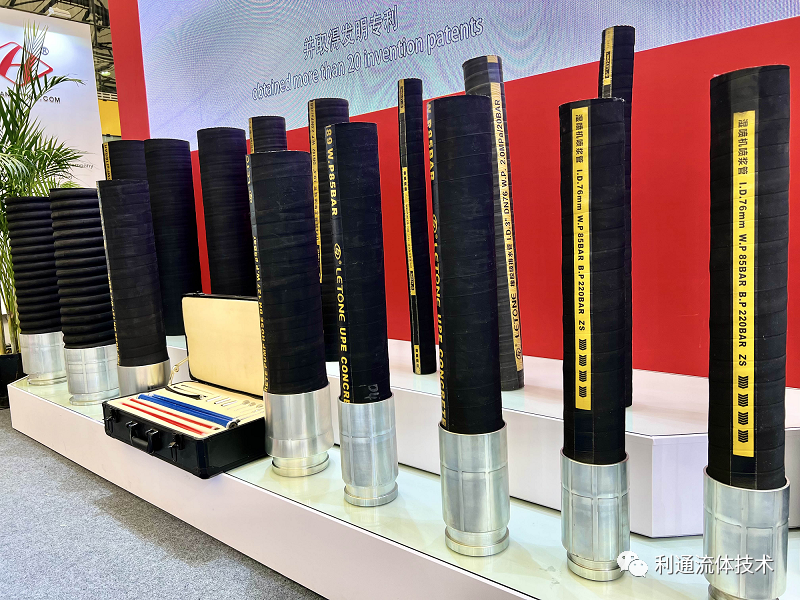Wear-resistant hose solutions: the key to improving industrial production efficiency
2024-11-27 13:45:11
In modern industrial production, wear-resistant hoses have become one of the key components to improve efficiency and reduce maintenance costs. Due to frequent mechanical wear and corrosion problems, these hoses provide strong protection for many industrial applications. This article will explore the advantages of wear-resistant hoses in various industries, the characteristics of different types of wear-resistant hoses and their application scenarios, and how to choose the right wear-resistant hoses to meet specific industrial needs.
The importance of wear-resistant hoses
Wear-resistant hoses are designed to cope with harsh industrial environments, especially in conditions involving high wear and high corrosion. For example, industries such as mining, steel, chemicals, and power are often faced with challenges such as corrosive substances, hard particles, and high-pressure gas flows. Therefore, choosing the right wear-resistant hose can not only extend the service life of the hoseline, but also reduce downtime caused by frequent replacement or maintenance, thereby improving overall operational efficiency.
Types and characteristics of wear-resistant hoses
1. Ceramic-lined wear-resistant hoses
Ceramic-lined hoses are usually made of high-aluminum ceramics, with extremely high hardness and wear resistance, and are one of the most widely used wear-resistant hoses. Ceramic materials can resist strong impact and friction from particulate matter, and their heat resistance also makes them perform well in high-temperature environments. However, ceramic-lined wear-resistant hoses are relatively fragile, and special attention needs to be paid during installation to avoid accidental mechanical damage.
2. Overlay wear-resistant hoses
Overlay wear-resistant hoses use a method of overlaying special alloy materials on the inner wall of the hose to form an alloy layer with high wear resistance. This treatment method can provide extremely high wear resistance and effectively extend the service life of the hose. In addition, the overlay process can select suitable alloy materials for treatment according to specific working conditions, and it is more flexible. However, due to the complex process, the manufacturing cost of overlay wear-resistant hoses is relatively high.
3. Polyurethane wear-resistant hoses
Polyurethane materials are known for their amazing wear resistance and tensile resistance. Polyurethane wear-resistant hoses can maintain good elasticity even under low temperature conditions, so they are widely used in cold environments. Its lightweight characteristics not only make installation easy, but also can significantly reduce energy consumption, making it an economical and environmentally friendly choice. However, for high-temperature environments, polyurethane materials are not ideal.
4. Composite wear-resistant hoses
Composite wear-resistant hoses combine multiple wear-resistant materials to form a hoseline system with multiple performance advantages. For example, common composite wear-resistant hoses include ceramic metal composite hoses and rubber ceramic composite hoses. This composite structure can provide excellent wear and impact resistance under different working conditions, and adapt to complex and diverse industrial needs.
Applicable industries and applications
Mining
During ore mining and processing, wear-resistant hoses can be used to transport materials containing slurry. Due to its material strength and wear resistance, the maintenance interval and cost caused by hoseline wear are greatly reduced.
Power
In coal-fired power plants and gas-fired thermal power plants, wear-resistant hoses are used to transport coal powder and high-temperature steam. These hoses not only need to withstand high temperature and high pressure, but also face the wear of the internal coal powder on the hose wall. Therefore, it is crucial to select hoses with excellent wear resistance.
Chemical
The common corrosive liquids and gases in the chemical industry have extremely harsh requirements on hoses. Wear-resistant hoses can effectively prevent chemical corrosion and ensure the stability and safety of chemical processes.
Cement
In cement production, hoses that transport cement raw materials face huge wear. Choosing the right wear-resistant hose can significantly extend the service life of the facility and reduce equipment maintenance costs.
How to choose the right wear-resistant hose
When choosing wear-resistant hoses, first of all, you should fully analyze the production environment and material characteristics, including considering factors such as temperature, pressure, hardness and shape of wear particles, and material flow rate. In addition, maintenance cycles and replacement costs should also be considered. Generally speaking, choosing wear-resistant hoses with excellent comprehensive performance will reduce operating costs in the short and long term.
Despite the high wear resistance and long service life of wear-resistant hoses, regular inspections and maintenance are still essential. Regular inspections can help detect potential wear or corrosion problems and prevent unexpected leaks or equipment failures. Regular cleaning of internal hoses to ensure that the hoses remain unobstructed can also help extend the service life of the hoses.
The application of wear-resistant hoses in industry has undoubtedly brought huge economic benefits. Extending equipment life by reducing wear not only improves industrial efficiency, but also reduces long-term operating costs. In the process of selecting and applying wear-resistant hoses, companies need to make the best choice based on their specific needs to maximize their return on investment.